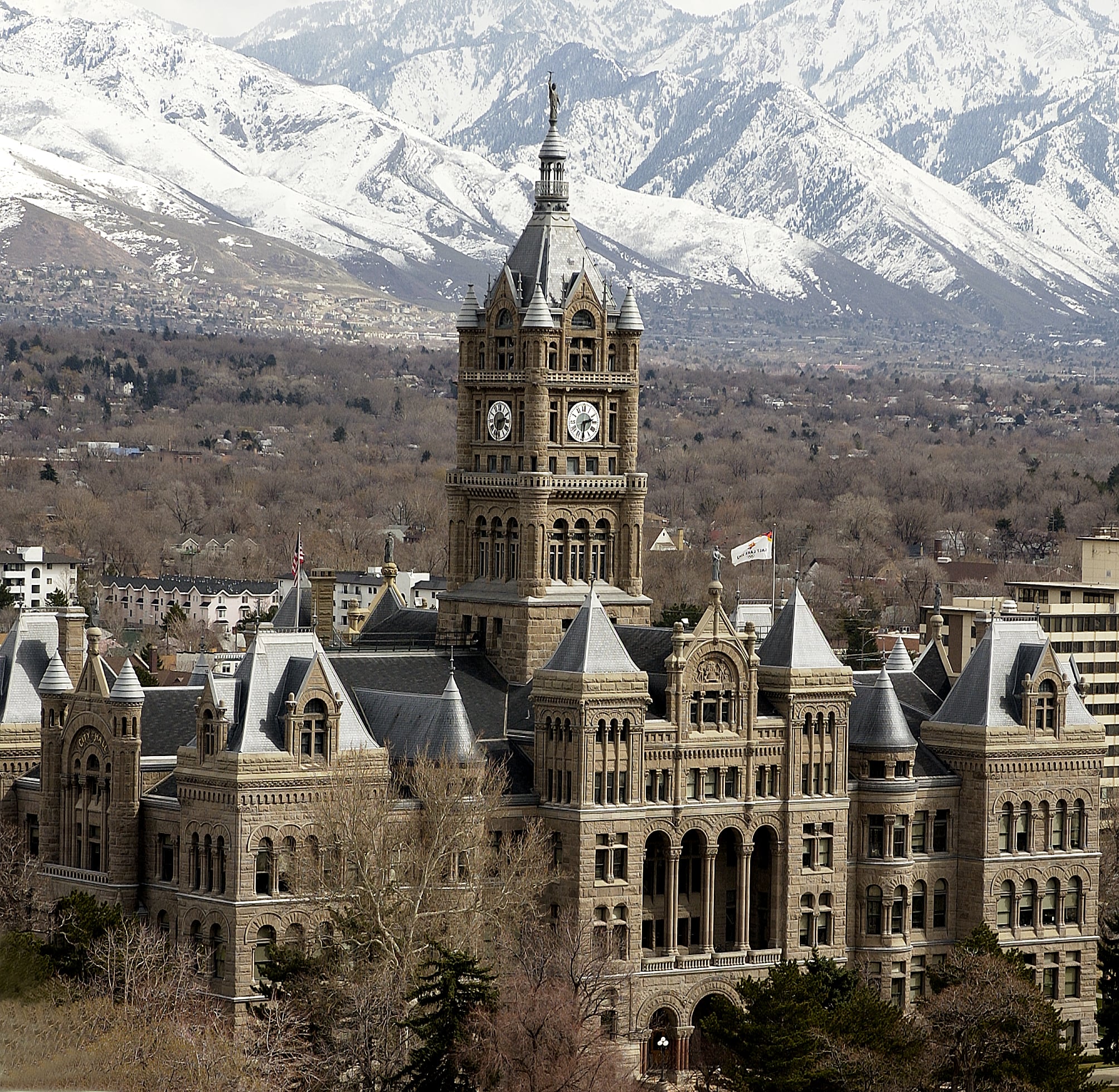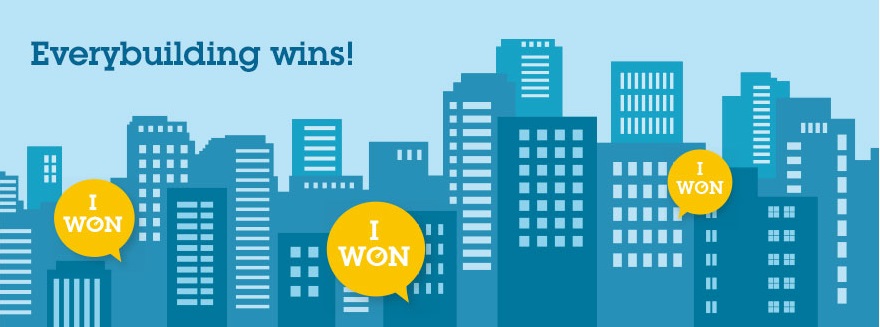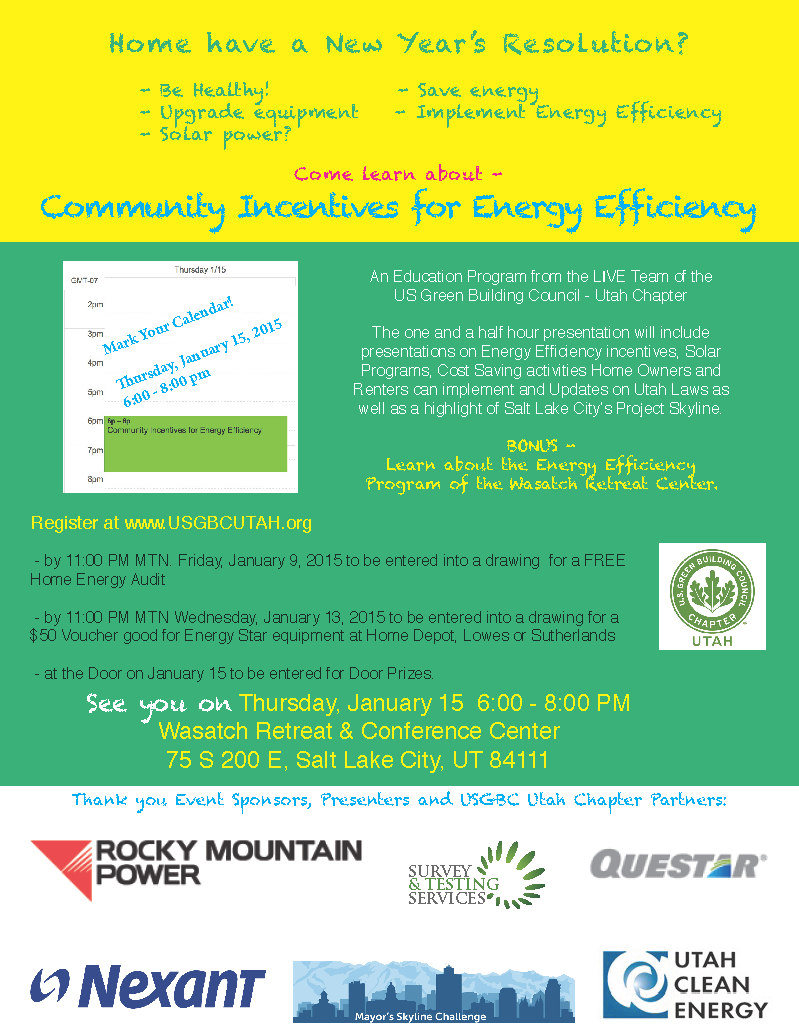Congratulations to Mayor’s Skyline Challenge participant, University of Utah
Project Skyline congratulates the University of Utah and Energy Manager Jeff Wrigley for the national recognition they received for their commitment to energy efficiency from the U.S. Department of Energy. “The University’s efforts showcase strategies that can be replicated at similar buildings, institutions and facilities across America,” said Dave Danielson, Assistant Secretary for Energy Efficiency and Renewable Energy. Read the full press release here.

September News

Project Skyline was pleased to be invited by Challenge Partner BOMA Utah to their September 4th lunch and learn.
ENERGY STAR introduced and demonstrated the core functionality of the ENERGY STAR Portfolio Manager tool. Attendees were able to learn more about the tool and engage in a more in depth discussion with ENERGY STAR leadership. Look out for information on future BOMA Utah educational events. Check out the webinar here.

Challenge partner USGBC Utah hosted a Project Skyline workshop on Efficiency Project Planning & Implementation Strategies on September 12th.
On Friday September 12th, Project Skyline hosted its first Mayor’s Skyline Challenge workshop with USGBC Utah. This workshop included a great line up of speakers that each offered their own expertise in the world of building energy efficiency, with plenty of opportunities to engage with the audience and lead the discussion.
Nexant offered an overview the energy efficiency project process, ETC Group presented their Top 10 energy efficiency strategies for existing buildings, and the University of Utah’s energy manager Jeff Wrigley presented a case study on efficiency improvements made to the Eccles Institute of Human Genetics.
This was an excellent start to the workshop series, and Mayor’s Skyline Challenge participants can expect future installments to offer just as much insight and engagement. Thanks again to USGBC Utah, Nexant, ETC Group and the University of Utah Facilities Management for sharing your expertise and forwarding building energy efficiency in the Salt Lake City community.

Project Skyline gets highlighted at national Urban Sustainability Directors Network (USDN) annual meeting.
Salt Lake City Sustainability Director Vicki Bennett and Sustainability Program Manager Tyler Poulson were invited to the national USDN meeting to discuss how local governments can help to scale up energy efficiency and net zero energy buildings.

Please join us in welcoming our newest Challenge participant, Architectural Nexus. See their profile here.
Upcoming webinars hosted by national experts
 September 24, 11:00-12:30 PM (MDT) – Portfolio Manager 201
September 24, 11:00-12:30 PM (MDT) – Portfolio Manager 201
Continue to learn about EPA’s new ENERGY STAR Portfolio Manager tool, with a deeper dive into more advanced functionalities such as managing and tracking changes to your property uses over time, using spreadsheet templates to update property data, setting goals and targets to plan energy improvements for properties, generating and using custom reports, and using the Sustainable Buildings Checklist. Register
September 25, 2:00-3:30 PM (MDT) – Community-Based Social Marketing
This webinar will describe community-based social marketing as a behavior-based approach for developing energy-efficiency programs. The webinar will begin with an overview of the five steps involved in developing and delivering a community-based social marketing program, including methods for prioritizing and selecting target behaviors, identifying barriers and benefits, leveraging behavior change tools, pilot testing, and evaluation. Each presentation will also cover case studies of scalable programs that have successfully applied the community-based social marketing model or its components to promote energy-efficiency and conservation behaviors. Register
Upcoming Project Skyline educational events
October: Creating an Energy Action Plan hosted by Challenge partner ENERGY STAR
November: Commissioning and Retro-commissioning hosted by Challenge partner Rocky Mountain Power
Stay tuned for more information!
Thank you to the Challenge participants who have recently submitted 2013 baseline data. If you haven’t submitted the 2013 baseline data for your participating buildings yet, please visit this link to get started!











 September 24, 11:00-12:30 PM (MDT) – Portfolio Manager 201
September 24, 11:00-12:30 PM (MDT) – Portfolio Manager 201



